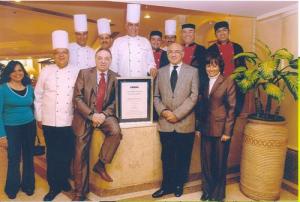 A federal lawsuit filed Thursday by the Equal Employment Opportunity Commission against the owners of an Eastside hotel claims black housekeeping employees were fired after they complained that Hispanic workers were paid more for doing the same work.
A federal lawsuit filed Thursday by the Equal Employment Opportunity Commission against the owners of an Eastside hotel claims black housekeeping employees were fired after they complained that Hispanic workers were paid more for doing the same work.
The suit, which alleges a pattern of racial discrimination against the hotel’s housekeeping staff and job applicants, also said the black workers were openly told they’d be fired and replaced because Hispanics cleaned better and complained less.
The EEOC filed the suit claiming racial discrimination on behalf of five fired employees of the Hampton Inn, 2311 N. Shadeland Ave., plus a group of black applicants who sought jobs at the hotel.
The EEOC suit also claims the hotel management destroyed employment records sought by the agency going back nearly two years. Incidents in the suit allegedly occurred from September 2008 to June 2009.
The suit seeks back pay and reinstatement for the fired employees, and it seeks unspecified compensation for other blacks denied employment on the basis of their race.
Hotel owners New Indianapolis Hotels LLC and Hement Thacker of Georgia could not be reached for comment. Attorneys in Indianapolis and Georgia, who formerly represented the hotel owner, declined comment.
Though employment records have been destroyed, the EEOC estimated about 30 to 35 applicants sought work at the hotel and may have been denied work based on their race.








